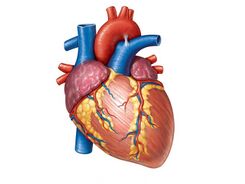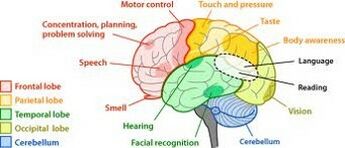ICF Checklist: Difference between revisions
Kapil Narale (talk | contribs) No edit summary |
Kapil Narale (talk | contribs) No edit summary |
||
| Line 10: | Line 10: | ||
== Introduction == | == Introduction == | ||
[[File:Dialog between man and woman 27 1.jpg|right|frameless|300x300px]] | |||
The [[International Classification of Functioning, Disability and Health (ICF)|International Classification of Functioning, Disability, and Health (ICF)]] is now a widely available and used method of classification, globally, throughout various healthcare systems. In order to facilitate the implementation of the ICF, various tools and media have been created. One of these is the ICF Checklist. <ref name=":0">Kostanjsek Nenad. Use of The International Classification of Functioning, Disability and Health (ICF) as a conceptual framework and common language for disability statistics and health information systems. BMC Public Health: 2011:11(4):1-6.</ref> The ICF Checklist is a tool used in clinical practice used to recall and document information on the functioning and disability of an individual. <ref name=":0" /> <ref name=":1">ICF Checklist. World Health Organization. Available from: ICF Checklist (who.int) (accessed 14 November 2022). </ref> | The [[International Classification of Functioning, Disability and Health (ICF)|International Classification of Functioning, Disability, and Health (ICF)]] is now a widely available and used method of classification, globally, throughout various healthcare systems. In order to facilitate the implementation of the ICF, various tools and media have been created. One of these is the ICF Checklist. <ref name=":0">Kostanjsek Nenad. Use of The International Classification of Functioning, Disability and Health (ICF) as a conceptual framework and common language for disability statistics and health information systems. BMC Public Health: 2011:11(4):1-6.</ref> The ICF Checklist is a tool used in clinical practice used to recall and document information on the functioning and disability of an individual. <ref name=":0" /> <ref name=":1">ICF Checklist. World Health Organization. Available from: ICF Checklist (who.int) (accessed 14 November 2022). </ref> | ||
| Line 33: | Line 34: | ||
These are ranked by <u>Extent of impairment</u>. | These are ranked by <u>Extent of impairment</u>. | ||
[[File:Human-heart-diagram.jpg|right|frameless|245x245px]] | |||
The Short List of Body Functions are categorized by: | The Short List of '''Body Functions''' are categorized by: | ||
* b1. Mental Functions | * b1. Mental Functions | ||
| Line 44: | Line 45: | ||
* b7. Neuromusculoskeletal and Movement Related Functions | * b7. Neuromusculoskeletal and Movement Related Functions | ||
* b8. Functions of the Skin and Related Structures | * b8. Functions of the Skin and Related Structures | ||
'''Part 1b: Impairment of Body Structures''' | '''Part 1b: Impairment of Body Structures''' | ||
[[File:The brain 2.jpg|right|frameless|345x345px]] | |||
These are ranked by <u>Extent of Impairment</u>, and <u>Nature of the Change.</u> | These are ranked by <u>Extent of Impairment</u>, and <u>Nature of the Change.</u> | ||
The Short List of Body Structures are categorized by: | The Short List of '''Body Structures''' are categorized by: | ||
* s1. Structure of the Nervous System | * s1. Structure of the Nervous System | ||
| Line 61: | Line 60: | ||
* s7. Structures Related to Movement | * s7. Structures Related to Movement | ||
* s8. Skin and Related Structures | * s8. Skin and Related Structures | ||
'''Part 2 ranks Activity Limitations and Participation Restrictions''' | '''Part 2 ranks Activity Limitations and Participation Restrictions''' | ||
These are ranked by measuring '''Performance''' via the '''Extent of Activity Limitation''', and measuring '''Capacity''' via the '''Extent of Participation Restriction''' | These are ranked by measuring '''Performance''' via the '''Extent of Activity Limitation''', and measuring '''Capacity''' via the '''Extent of Participation Restriction''' | ||
[[File:Running Man and Woman.jpg|right|frameless|300x300px]] | |||
The Short List of Activity & Participation domains include: | The Short List of '''Activity & Participation''' domains include: | ||
* d1. Learning and applying Knowledge | * d1. Learning and applying Knowledge | ||
| Line 79: | Line 76: | ||
* d8. Major Life Events | * d8. Major Life Events | ||
* d9. Community, Social, and Civic Life | * d9. Community, Social, and Civic Life | ||
[[File:Sun vit D.jpg|right|frameless|330x330px]] | |||
| Line 85: | Line 83: | ||
These factors are ranked whether they are '''Barriers''' or '''Facilitators''' | These factors are ranked whether they are '''Barriers''' or '''Facilitators''' | ||
The short list of Environmental Factors include: | The short list of '''Environmental Factors''' include: | ||
* e1. Products and Technology | * e1. Products and Technology | ||
| Line 93: | Line 91: | ||
* e5. Services, Systems, and Policies | * e5. Services, Systems, and Policies | ||
[[File:Biceps contraction.jpg|right|frameless|230x230px]] | |||
'''Part 4''' is left blank to note any other '''Contextual factors''', which would include any '''Personal Factors''' that may have an impact on functioning. '''Part 4.1''' asks for a thumbnail sketch of the individual and any other relevant information. | '''Part 4''' is left blank to note any other '''Contextual factors''', which would include any '''Personal Factors''' that may have an impact on functioning. '''Part 4.1''' asks for a thumbnail sketch of the individual and any other relevant information. | ||
Revision as of 11:44, 24 November 2022
Original Editor - User Name
Top Contributors - Kapil Narale
This article or area is currently under construction and may only be partially complete. Please come back soon to see the finished work! (24/11/2022)
Introduction[edit | edit source]
The International Classification of Functioning, Disability, and Health (ICF) is now a widely available and used method of classification, globally, throughout various healthcare systems. In order to facilitate the implementation of the ICF, various tools and media have been created. One of these is the ICF Checklist. [1] The ICF Checklist is a tool used in clinical practice used to recall and document information on the functioning and disability of an individual. [1] [2]
The ICF Checklist is briefly described on the Overview of the ICF and Clinical Practice page.
Description[edit | edit source]
The ICF Checklist gives an outline of the primary functioning of any individual, regarding their body functions and structures, activities and participation, and environmental factors. [1]
The Checklist also includes diagnostic information. This allows the user to analyze the association between a health condition and the related functioning problems. [1]
The Checklist is versatile in the sense that it can be used in various applications and settings, being able to address and categorize any type of impairment or condition. This is one of the strengths and benefits of the this tool. [1]
Sections of the ICF Checklist[edit | edit source]
As seen on the ICF Checklist document itself, it is 15 pages, and very thorough collection of information. [2]
The first section collects demographic information.
This is then followed by collecting information on the components of the ICF, in different Parts:
Part 1 ranks Bodily Functions and Structures
Part 1a: Impairment of Bodily Functions
These are ranked by Extent of impairment.
The Short List of Body Functions are categorized by:
- b1. Mental Functions
- b2. Sensory Functions and Pain
- b3. Voice and Speech Functions
- b4. Functions of the Cardiovascular, Haematological, Immunological, and Respiratory systems
- b5. Functions of the Digestive, Metabolic, and Endocrine Systems
- b6. Genitourinary and Reproductive Systems
- b7. Neuromusculoskeletal and Movement Related Functions
- b8. Functions of the Skin and Related Structures
Part 1b: Impairment of Body Structures
These are ranked by Extent of Impairment, and Nature of the Change.
The Short List of Body Structures are categorized by:
- s1. Structure of the Nervous System
- s2. The Eye, Ear, and Related Structures
- s3. Structures involved in Voice and Speech
- s4. Structure of the Cardiovascular, Immunological, and Respiratory Systems
- s5. Structures Related to the Digestive, Metabolism, and Endocrine Systems
- s6. Structures Related to Genitourinary and Reproductive Systems
- s7. Structures Related to Movement
- s8. Skin and Related Structures
Part 2 ranks Activity Limitations and Participation Restrictions
These are ranked by measuring Performance via the Extent of Activity Limitation, and measuring Capacity via the Extent of Participation Restriction
The Short List of Activity & Participation domains include:
- d1. Learning and applying Knowledge
- d2. General Tasks and Demands
- d3. Communication
- d4. Mobility
- d5. Self Care
- d6. Domestic Life
- d7. Interpersonal Interactions and Relationships
- d8. Major Life Events
- d9. Community, Social, and Civic Life
Part 3 ranks Environmental Factors
These factors are ranked whether they are Barriers or Facilitators
The short list of Environmental Factors include:
- e1. Products and Technology
- e2. Natural Environment and Human made changes to the Environment
- e3. Support ad Relationships
- e4. Attitudes
- e5. Services, Systems, and Policies
Part 4 is left blank to note any other Contextual factors, which would include any Personal Factors that may have an impact on functioning. Part 4.1 asks for a thumbnail sketch of the individual and any other relevant information.
The following sections are the Appendices,
Appendix 1 - Brief Health Information
Appendix 2 - General Questions for Participation & Activities - these are divided into the bottom six domains as listed above in the Participation & Activities section
Appendix 3 - Guidelines for the use of ICF Checklist 2.1A
Development[edit | edit source]
Items from the ICF classification were assigned by experts to outline the most frequently domains. This was then tested to confirm the selections, and make any more additions of missing items. [1]
Resources[edit | edit source]
- The ICF Checklist can be found at this link on the WHO website.
References[edit | edit source]
- ↑ 1.0 1.1 1.2 1.3 1.4 1.5 Kostanjsek Nenad. Use of The International Classification of Functioning, Disability and Health (ICF) as a conceptual framework and common language for disability statistics and health information systems. BMC Public Health: 2011:11(4):1-6.
- ↑ 2.0 2.1 ICF Checklist. World Health Organization. Available from: ICF Checklist (who.int) (accessed 14 November 2022).












